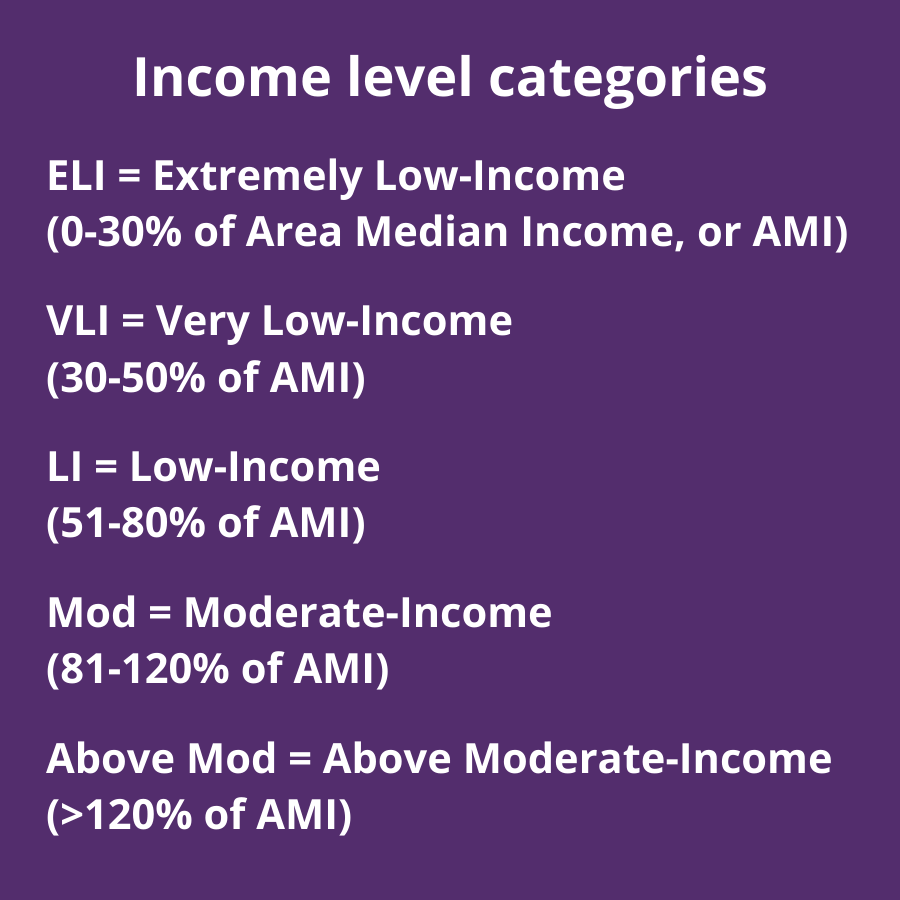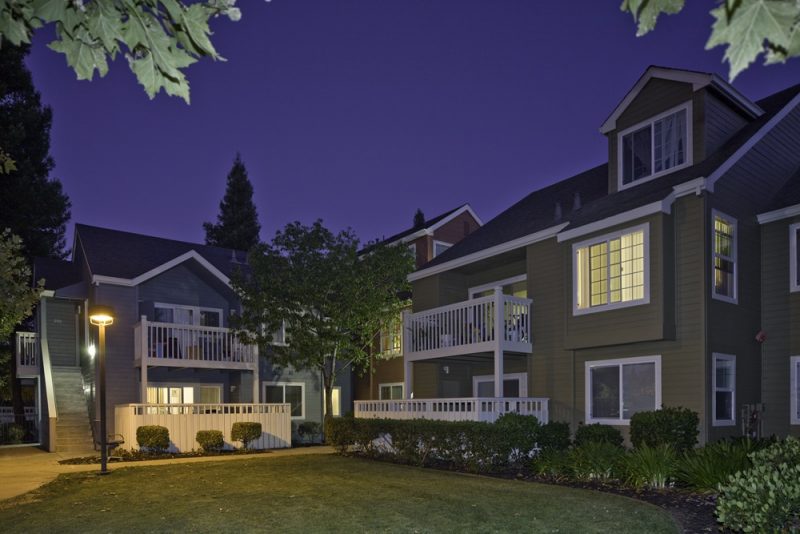Inclusionary Housing Ordinances (IHO) require developers to set aside a portion of units in new market rate housing developments at rents affordable to low- and moderate-income residents. Units are deed restricted, maintaining affordability, typically for 55 to 99 years. Local jurisdictions must also provide alternative methods for developers to comply with the IHO, most commonly by the payment of a fee in lieu of developing on site affordable units. These in lieu fees are a critical resource for cities to invest in 100% affordable housing, leveraging a relatively small local contribution with many times the investment in state and federal funding. In Santa Clara County, most cities have adopted inclusionary housing ordinances to help meet their Regional Housing Needs Allocation (RHNA) obligations.

As California’s housing crisis worsens, cities face growing pressure to increase the production of affordable housing. While no single policy can fully address a community’s diverse affordable housing needs, inclusionary housing can be an effective tool to create new homes affordable to residents with incomes below the area median income (AMI).
IHOs are also one of the few tools available locally for creating housing affordable for middle income families (those that earn between 60% and 120% of AMI), since most state and federal programs for affordable housing are targeted to households earning below 60% of AMI. This makes IHOs a critical strategy for addressing housing needs across a broader income range. IHOs can help develop mixed income communities, ensuring that people from diverse socioeconomic backgrounds have equal access to services and amenities. As such, IHOs have the potential to promote affordable housing in high resource neighborhoods, helping local jurisdictions partially meet their fair housing obligations.
However, cities must carefully balance the IHO requirements to avoid impeding market rate housing production, tailoring compliance options to local housing needs and market conditions. If the percentage of affordable units is set too high or at deep levels of affordability, it can make market rate developments financially infeasible, slowing overall housing production. Some cities, such as San Jose, have addressed this challenge with geographically targeted IHO requirements, based on the strength of different housing market areas within the jurisdiction.
The City of San Jose has long been a leader in California in the use of an IHO, leveraging market-rate development to create affordable housing resources for lower income families and individuals. For years, the scope of inclusionary housing policies was limited to for-sale housing due to legal constraints arising from the court ruling in Palmer Sixth Street Properties v. Los Angeles (2009). Assembly Bill 1505, known as the Palmer Fix, was created in response to the 2015 California Supreme Court ruling in California Building Industry Association v. City of San Jose. AB 1505 codifies the Court’s decision, upholding the constitutionality of local governments’ ability to adopt inclusionary housing ordinances for both rental and for-sale housing.
The California Department of Housing & Community Development (HCD) can require a city to conduct a feasibility study as evidence that their IHO does not unduly constrain the production of housing if the required percentage exceeds 15% of units affordable to households earning 80% or less of AMI. HCD can also mandate a feasibility study if a jurisdiction either fails to meet 75% of its RHNA for above moderate-income housing for five or more years, or has not submitted its annual housing element progress report for two consecutive years. If the study is deemed insufficient, the jurisdiction may only enforce a 15% affordability requirement once a study demonstrates that higher affordability levels are feasible.
Meeting IHO Obligations
IHOs generally require developers to allocate about 10% to 15% of new units for affordable housing, usually through on-site development. Cities must also provide alternative compliance methods, such as fees in lieu of development, off-site construction, or land dedication (a parcel of land suitable for developing affordable housing is given to the city at no cost). These alternatives help ensure that an IHO does not become a barrier to housing production by allowing developers to choose the option that works best for each unique development. The most commonly used alternative is the payment of in-lieu fees, which are then used to finance affordable housing development. Cities set in-lieu fees to meet their highest priority: higher in-lieu fees tend to produce more on-site affordable units in mixed-income communities, and lower fees incentivize developers to pay the fees instead.
To receive the building permit for a proposed development, developers must have a compliance plan accepted by the city, which shows how they will fulfill the IHO obligation. In cities without an IHO, developers might still be required to provide affordable units as part of negotiated community benefits agreements, particularly in large planned developments. While this approach offers flexibility, it is time-consuming and requires city council approvals on a case-by-case basis.
Developers may also use the state’s Density Bonus Law to increase the financial feasibility of inclusionary housing, taking advantage of concessions and waivers of development standards such as open space or commercial space requirements, height standards, or setbacks. Cities may also offer local density bonuses, zoning variances, streamlined site development standards, flexible design requirements, and parking reductions that improve financial feasibility in exchange for more or more deeply affordable units.
Inclusionary Zoning’s Impact on Housing Production
Cities must design IHOs to balance affordable housing production and the financial feasibility of market-rate housing. A recent report by the Terner Center, Modeling Inclusionary Zoning’s Impact on Housing Production, provides valuable insights into these trade-offs.
The report analyzes the City of Los Angeles’ Transit-Oriented Communities (TOC) program as a case study, using a proprietary Housing Policy Simulator to model the effects of various inclusionary zoning requirements on market-rate and BMR housing production. The model shows that IHO requirements set too high in either percent of units or depth of affordability reduce overall housing production. For example, requiring 25% of units at less than 30% AMI would substantially reduce overall housing production over 10 years, with only marginal gains in affordable units. Even modest increases in market rents to cover the operating costs of BMR units can offset the value of the affordable units produced, highlighting the risks of poorly calibrated inclusionary housing policies.
The report also finds that local density bonuses and other incentive-based housing production policies have limited impact and are unlikely to make higher inclusionary requirements feasible. The report emphasizes that expanding multifamily zoning and broadening land use reforms, along with public subsidies, are necessary to effectively address housing affordability and increase production for a broader population.
IHO in Cities of Santa Clara County
The table below outlines the inclusionary housing requirements and in-lieu fee options across cities in the county as of December 2024.
| City | Inclusionary Obligation for New Residential Development | In-lieu fee |
| Campbell | For 10 or + units: ≥ 15% LI/ and Mod | Effective Oct 2025, $60 per sq ft multiplied by the average size of the units in the development. |
| Cupertino | For sale 7+ units, 20% BMR units, half median, half moderate. For rent: 15% of units, 60% VLI / 40% LI. | At Council discretion, $21.87–$36.44 per sq. ft. |
| Gilroy | In Neighborhood District zone only (newer areas annexed into the City): 15% of units VLI, LI, or Mod | |
| Los Altos | For sale or rent, 5-9 units: 15 % VLI, LI, or Mod. For sale 10 + units: 15% BMR, majority at Mod, remaining at VLI and/or LI For rent 10+ units: 20% LI or 15% VLI | 6% of the building permit valuation for the entire project |
| Los Gatos | For 5-19 units: 10% BMR units For 20-100 units: 10-20% BMR units (calculated by formula) For 101+ units: 20% BMR. dwelling designated to VLI, LI, and Mod | At Council’s discretion, 6% of the building permit valuation for the entire project |
| Milpitas | For 10 + units: 15% Rental units assigned to VLI/ LI Ownership units assigned to VLI/ LI /MI | At Council’s discretion, $48.26 per sq. ft. |
| Morgan Hill | Inside Downtown area, for 2+ units For sale: 10% Mod For rent: 10% LI & VLI Outside Downtown: For sale: 15% Mod For rent: 10% LI & VLI | Inside Downtown area: For sale: $15.44 per sq. ft. For rent: $16.96 per sq. ft. Outside Downtown: For sale: $23.04 per sq. ft. For rent: $33.91 per sq. ft. |
| Mountain View | For rent: 15% affordable at 50%-120% AMI, with a weighted average of 65% AMI and including at least 2 income levels. Units below 50% AMI allowed if 65% average AMI is met. For sale, excluding row houses/townhouses: 15% of units at 80%-120% AMI with a weighted average affordability of 100% AMI. For sale, row houses/townhouses: 25% of units including 15% at an average of 100% AMI and 10% at an average of 135% AMI. | At Council’s discretion, in-lieu fee amount greater than value of developing the BMR units on-site. In-lieu fee may be allowed for fractional BMR unit less than 0.5 For sale Mod: $114 per sq. ft. For rent LI/Mod: $148 per sq. ft. Other projects with residential units: $65 per sq. ft. |
| Palo Alto | For sites less than 5 acres: 15% units for VLI/LI and Mod households For 5+ acres: 20% units for VLI/LI and Mod households | At Council’s discretion: Single-family detached: $91.92 per sq. ft. Single-family attached/Condos/Multifamily: $61.29 per sq. ft. |
| Santa Clara | < 10 units: 1 BMR unit up to 100% AMI. 10+ units: 15% for ELI, VLI, LI, and Mod, with affordable units distributed to a maximum of 100% of AMI. | For Sale: $30.83-$46.24 per sq. ft. For Rent: $30.83 per sq. ft. |
| Sunnyvale | For rent 3+ units: 15% units, 5% for VLI and 10% for LI For Sale 7+ units: 15% for Mod | For rent 3 to 6 units: $15.50 per sq. ft. For rent 7+ units: At Council discretion, $31 per sq. ft. For sale 7+ units: At Council discretion, 7% of the contract sales price of all units in the project. |
| San Jose | Based on the market area, a variety of options exist to fulfil IHO obligation. Click here for the details. | |
**ELI: Extremely Low Income household | VLI: Very Low Income household | LI: Low Income household | Mod: Moderate Income household
Additional Resources
- Terner Center for Housing Innovation: “Current Practices and Policy Considerations to Improve Implementation of Fees Governed by the Mitigation Fee Act“, 2019
- Full text of AB 1505 (the 2017 “Palmer Fix” bill)
- City of San Jose: Inclusionary Housing Ordinance
- Grounded Solutions Network: “Inclusionary Housing Builds Stronger Communities”
- Grounded Solutions Network: Inclusionary Housing Database Map
- Grounded Solutions Network: Inclusionary Housing Calculator
- Next City: “Mapping the Spread of Inclusionary Housing Policies,” 2018
- Lincoln Institute of Land Policy: “New study looks at hundreds of affordable housing programs across the United States,” 2017
- Urban Land Institute: “The Economics of Inclusionary Zoning,” 2016
- Center for Housing Policy: “Separating Fact from Fiction to Design Effective Inclusionary Housing Programs,” 2016
- Lincoln Institute of Land Policy: “Inclusionary Housing: Creating and Maintaining Equitable Communities,” 2015
- Cornerstone Partnership: “What Now? Understanding What CBIA vs. City of San Jose Means for Inclusionary Housing in California’s Cities,” 2015
- Palmer Sixth Street Properties v Los Angeles
- Center for Urban Policy: “Making Inclusionary Housing More Flexible: Four Ideas for Urban Settings,” July 2015
- Institute for Local Self Government: “California Inclusionary Housing Reader,” 2003
- Santa Clara County Grand Jury Report: Density is our Destiny, June 2018

